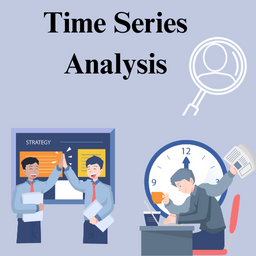Health Care System In Time Series Analysis

Time Series Analysis,Comparison to Inferential Statistical,Characteristics of Time Series Analysis
What is Time Series Analysis
Time series analysis and statistical time series models are basic to describing and studying change in human responses and behavior. They are appropriate to cyclical patterns as well as periodic or systematic variance across time.
Many of the phenomena of interest to nursing are intimately
related to time. Thus, time series statistical models are an appropriate and
powerful methodology for longitudinal nursing studies of intra-individual
differences in rate and patterns of change.
Comparison to Inferential Statistical
In contrast to inferential statistical models, where aggregate data are generalized to describe changes in human behavior, time series analysis uses individual patterns of change to predict future behavior.
Thus, the subject is a unitary entity or system whose behavioral state can be isolated within a given point and measured through a specified window of time. For the purpose of time series analysis, the singular system can be defined at many different levels of complexity and inclusiveness.
Examples of individual
systems that are legitimate subjects for time series nursing research include
cardiovascular response to a cardiac stressor, individuals, families,
communities, health care systems, even political institutions.
Characteristics of Time Series Analysis
The characteristic feature of time series analysis is that the phenomenon to be studied has a distinctive temporal component the behavioral state will vary predictably with the passage of time. Obviously, the passage of time cannot be manipulated, thus, differences in patterns of change are not a direct function of time.
Time is not the independent variable; it is, instead, a necessary temporal frame or marker in any time series analysis study. Time series studies can be either univariate or multivariate.
However, a time series variable always consists, by definition, of a series of observations that occur in temporal order. Thus, multivariate time series analysis is accomplished by identifying the relationship between or among two or more pairs of univariate time series.
Unlike inferential statistical models, time series data points are not intended to be independent of one another. Each value is highly correlated with every successive value. Thus, any observation in a time series has significantly less individual predictive significance than its inferential counterpart.
In time series analysis, predictive power is not a direct function of sample size. Instead, predictive power depends on an accurate hypothesis of the internal temporal structure of the phenomenon, selection of a sampling time window of sufficient length to capture multiple expressions of the change being studied, and identification of a sampling frequency that will adequately capture all critical phases of the evolving pattern.
Although change in behavior is an essential characteristic of many of the phenomena of interest to nursing science, the use of statistical time series models is not always appropriate or feasible.
However, although time
series analyzes are complex and costly, they permit nurse scientists to more
completely examine and evaluate trends, cycles, and patterns of change that are
framed within predictable spaces of time.




Give your opinion if have any.